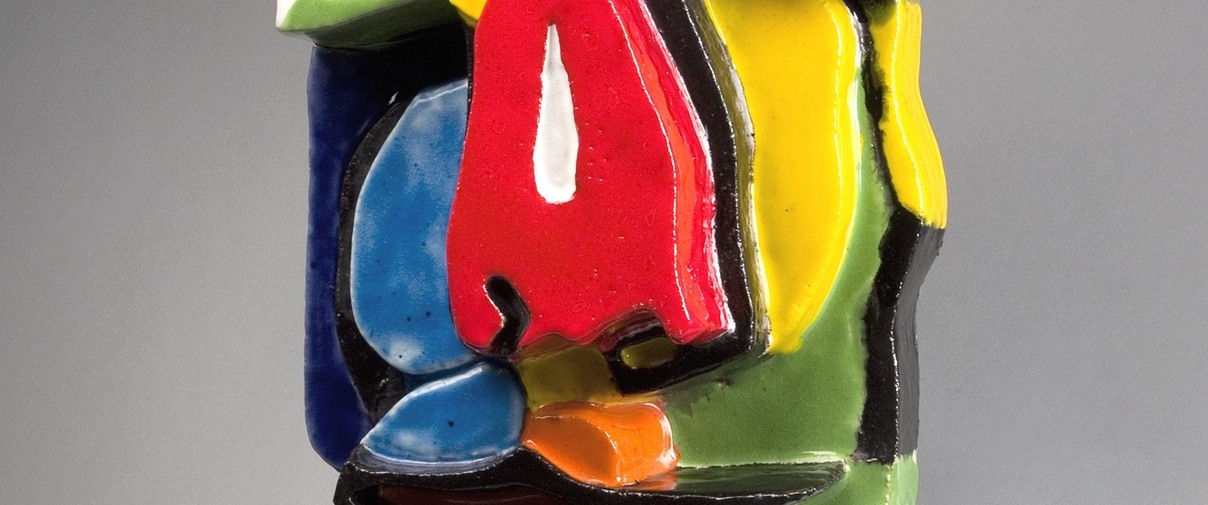Karel Appel, Tête, 1978, earthenware, produced by Struktuur 68, The Hague, h. 56,6 cm.
How did a painter like Karel Appel (1921 - 2006), who was so addicted to paint and linen, find himself in the world of ceramics? We don’t have to dig deep for the answer. After all, famous artists who Appel admired served as examples. Pablo Picasso and Joan Miró, for instance, had been working intensively with clay since the mid-1940s. They painted countless plates and saucers, but also modelled vases and sculptures. Befriended ceramists who made their studios, craftsmanship and skills available to them were indispensable for the execution of all these works. Karel Appel also depended on specialist studios for his ceramics. In the autumn of 1948 – shortly before the foundation of Cobra – he and his companions Rooskens, Corneille and Constant experimented for the first time at the Russel-Tiglia earthenware factory in Tegelen in Limburg. Later Appel worked together with De Porceleyne Fles in Delft. But from 1968 onwards he only had his ceramics produced at the Struktuur 68 studio in The Hague. This studio succeeded in developing glazes in the characteristic Cobra palette. This enabled the creation of colourful images as a kind of three-dimensional painting. Appel loved working in clay, he thought it was a fantastic material: ‘Ceramics are eternal, resistant to cold and heat, rain, weather and wind’. He even had plans for his own museum with the building consisting entirely of ceramics. It was never built, but fortunately we can enjoy the many cheerful sculptures he left us. Are you feeling gloomy? Come to the Princessehof and Tête will put a smile back on your face!
Struktuur 68
At Struktuur 68 in The Hague, artists can experiment with clay and make large ceramic works (or have them made). Since its foundation in 1968 by Henk Trumpie and Jacques van Gaalen, more than 200 artists from the Netherlands and abroad have worked with this studio. They create work that merges sculpture and painting: colourful ceramic sculptures that are primarily exhibited in public space. In addition to being a hive of production, Struktuur 68’s studio is also a meeting place for artists, bursting with creativity, where new ideas and friendships are born.
Karin Gaillard, curator of European ceramics at the Princessehof National Museum of Ceramics.
